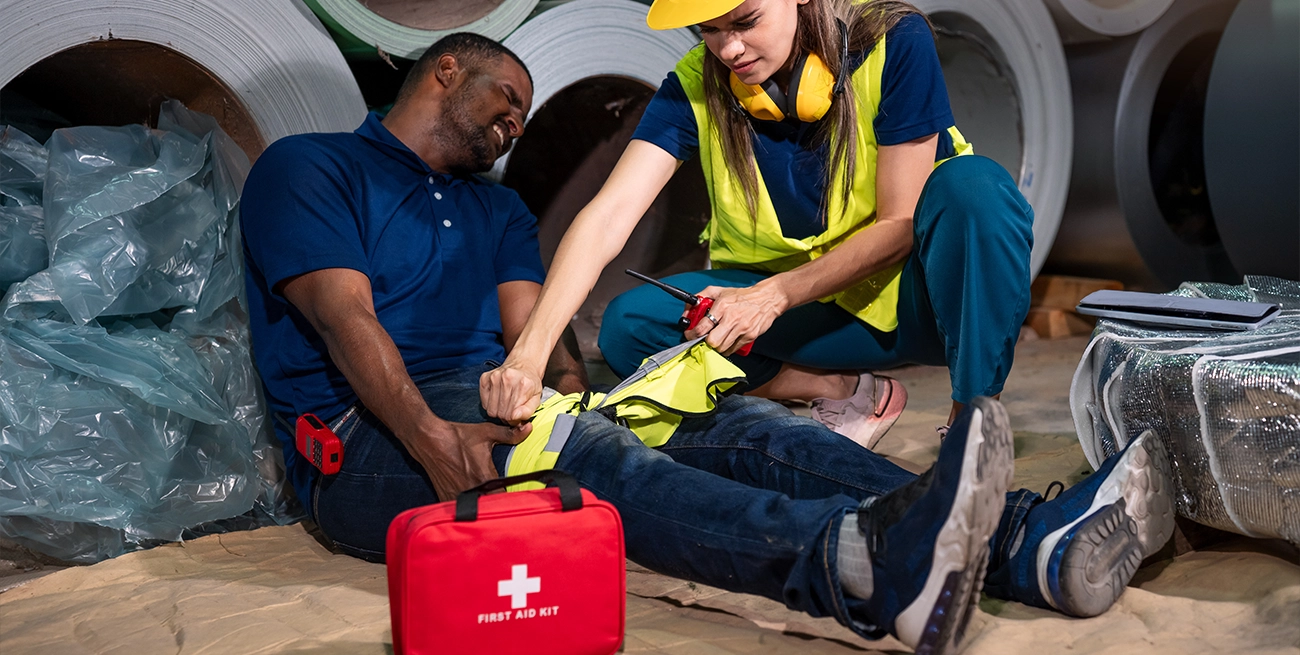Essential First Aid Supplies for Industrial Worksites: What’s Missing from Your Kit?

Anyone who works in a hazardous environment knows that accidents happen. Industrial worksites, whether in construction, manufacturing, or any high-risk job, are full of potential dangers. Having a well-stocked first aid kit can make all the difference in preventing minor injuries from escalating and in providing immediate care when more serious accidents occur. However, many industrial first aid kits are either incomplete or lack critical supplies, putting workers at unnecessary risk. So, how do you ensure your first aid kit is truly ready for anything?
I’ve spent years in industrial settings where the “basics” were always there—bandages, antiseptics, and gauze—but something was always missing when a more complex injury occurred. Having learned from those experiences, I want to share what should be in every industrial first aid kit and what’s often left out. You might be surprised to find what could be the difference between a small accident and a big emergency. So let’s dive into the essentials you need to consider adding to your kit if it’s lacking anything.
Basic Supplies: The Cornerstone of Any Kit
There’s no denying that your first aid kit needs the basics. These supplies are the foundation of what will get you through most minor injuries—cuts, scrapes, and burns. But it’s also important to note that the basics need to be of high quality and sufficient quantity. No one wants to waste time hunting for a small bandage when they need something that fits the injury.
- Bandages and Dressings: Make sure you have a variety of adhesive bandages, sterile gauze pads, and non-stick dressings for wounds of different sizes. Stocking plenty prevents contamination and ensures readiness.
- Antiseptic and Antibacterial Ointment: Keep wounds clean with quality antiseptics like alcohol wipes or iodine, and include antibiotic ointments to prevent infection.
- Burn Relief Products: Burn gels or pads with aloe vera or lidocaine can offer quick relief and minimize damage from heat injuries.
- Cold Compresses and Ice Packs: For sprains, strains, or head injuries, non-refrigerated ice packs are a must-have for reducing swelling.
The Missing Items: What’s Often Left Out
Your kit probably has the basics, but what about the less obvious essentials? Missing items can make a significant difference in handling unexpected injuries. Here’s what to consider adding:
- Trauma Shears and Scissors: Essential for cutting clothing or seatbelts, trauma shears are a versatile addition to any kit.
- Splints and Stabilization Supplies: For falls or heavy machinery accidents, lightweight splints can stabilize injuries and prevent further damage.
- Burn Blankets: Thermal blankets are invaluable for protecting against fire and treating severe heat injuries.
- Eye Wash Stations and Saline Solution: Critical for preventing long-term damage from chemical splashes or dust exposure, a proper eye wash station is indispensable.
- First Aid Manual or Quick Guide: A simple reference guide helps ensure proper care during emergencies.
- AED (Automated External Defibrillator): A lifesaving device for cardiac emergencies, an AED should be available at any high-risk site.
- CPR Mask: Protect both the rescuer and the injured with a CPR mask featuring a one-way valve.
- Blood-Clotting Dressings: Hemostatic gauze can quickly stop heavy bleeding, making it a critical addition for severe injuries.
Specialized Supplies for Specific Worksites
Different industries face unique risks, and your first aid kit should reflect those challenges:
- Chemical Spill Kits: For handling hazardous substances, include materials to neutralize or absorb spills and treat chemical burns.
- Hearing Protection: Keep earplugs or earmuffs available for noisy environments to prevent long-term hearing damage.
- Cold and Heat-Related Injury Kits: Emergency blankets, cooling packs, and heat packs are essential for worksites with extreme temperatures.
- Rescue Equipment: For high-elevation or confined-space worksites, keep harnesses, ropes, or ladders in your kit.
Why Maintenance Is Key
Stocking the right supplies is only half the battle. Regularly check your kit to ensure items aren’t expired or depleted. Replace used supplies immediately, and make sure everyone knows the kit’s location and how to access it quickly.
Making It Happen
A properly stocked first aid kit is an investment in safety. It can save lives, reduce the severity of injuries, and speed up recovery times. Take a close look at your current kit—is it ready for the unexpected? Adding these often-overlooked items could make all the difference when it matters most.


